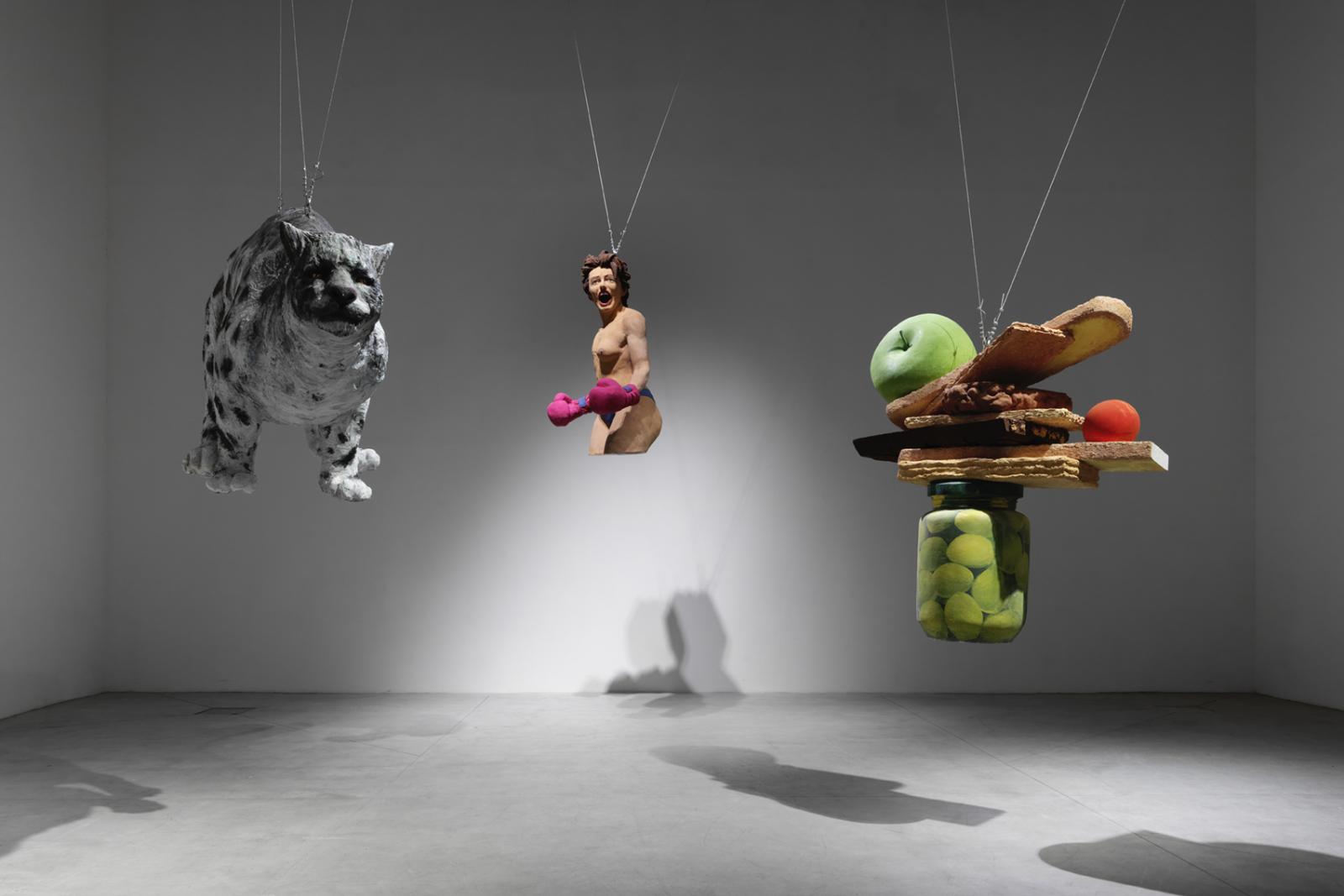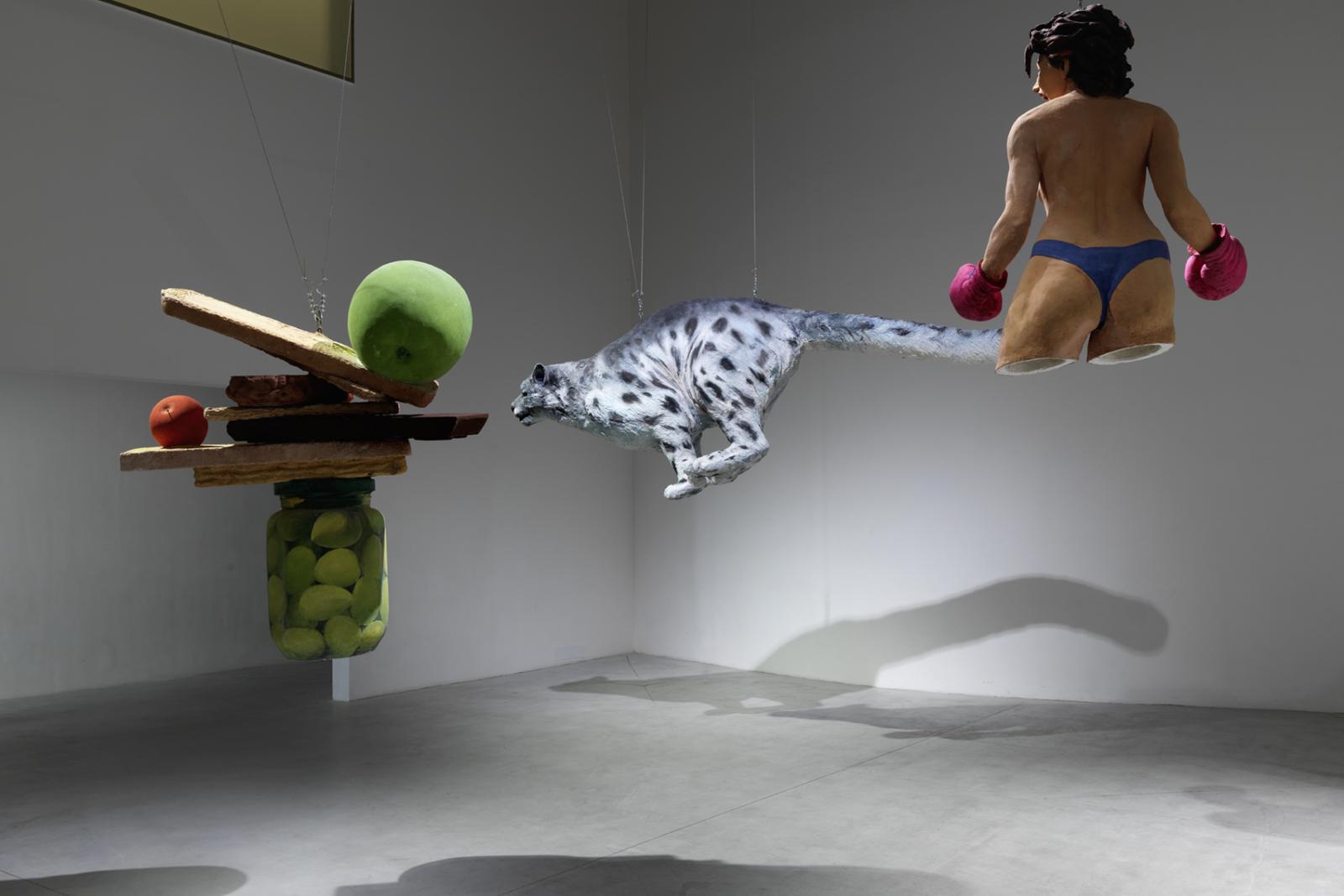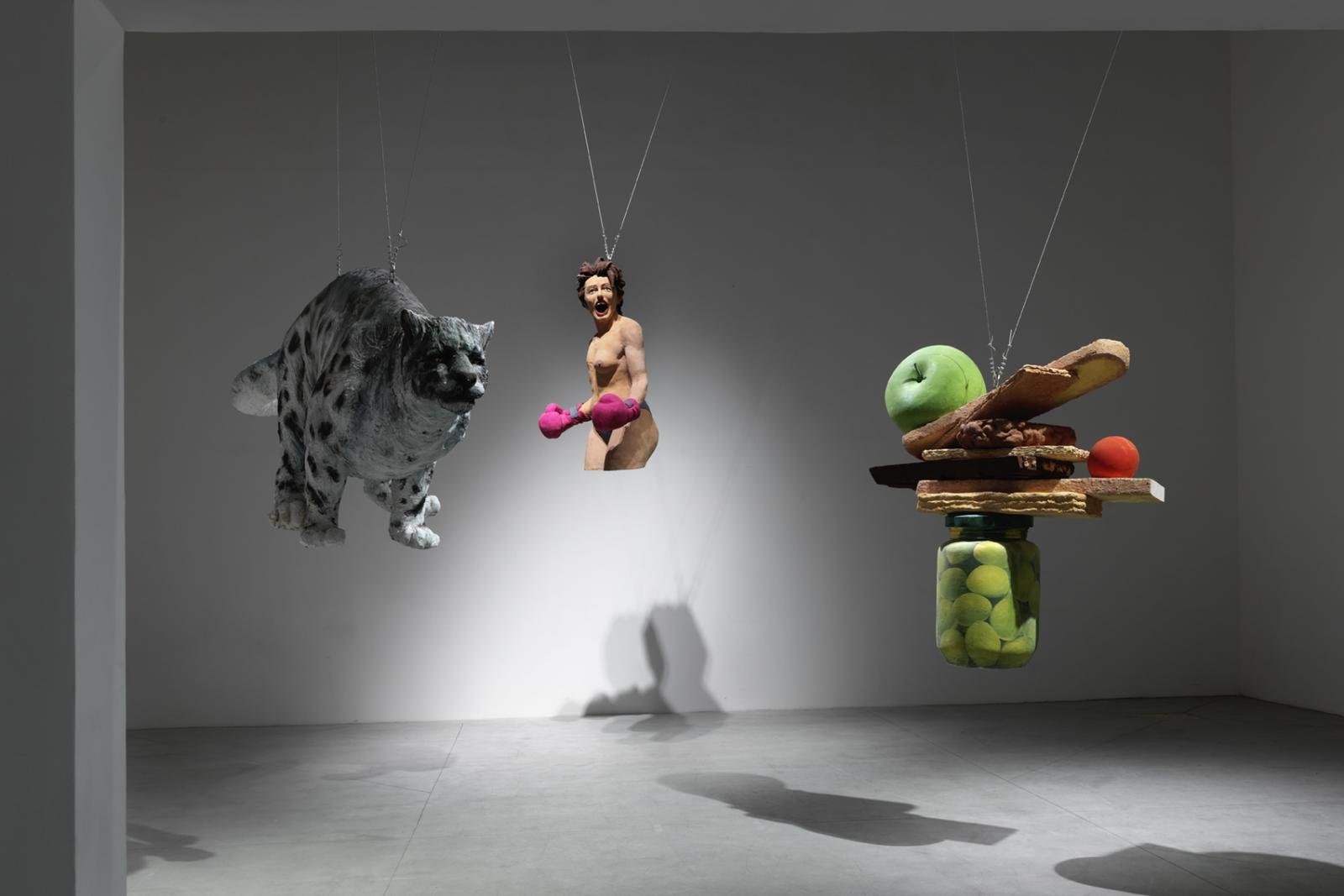Wang Du
Réalité jetable (détail), 2000-2017
Disposable Reality, was originally shown at Le Consortium in 2000.
This project brought Wang Du to think about new ways on how to confront the issue of space, conceived as the centerfold spread of newspaper with the artist as the editor in chief. On the pages/space he arranged the images that he had selected and edited according to their sizes in order to create a tension and the appropriate relationship with the space.
Under the title Disposable Reality, this piece gathered 15 different sculptures cast from magazine images.
The strategy of disposable objects turned out to be the most successful concept to sell cheap, but necessary and ubiquitous plastic items. But as an extension to this basic idea, everything in today consumer world has become disposable, from objects to concepts, from ideas to trends and even architecture. Limited duration and short-term resistance are daily environmental patterns.
It took two months to complete this project with the help of about 10 assistants. This heavy labor was an essential part of the work.
With clay to model plaster or silicone to mould and cast, the studio was a place for a sort of journey back to the hand-made tradition of sculpture, away from the computer, laser-assisted three-dimensional world that is in many cases the contemporary way to be still involved with sculpture. But plaster, which retains the fragility and temporary quality of the sculpture it will become, is painted with gouache paint in flat tints in order to keep the surface mat. The result is good enough to come close to reality without too much commitment. Gouache colors are also the cheapest colors, complementing Wang Du’s idea of the disposable, and are the same types of paints that children use in kindergarten.
When Wang Du arrived in Paris, he had just been released from Chinese jails where he had been for nine months after the 1989 democratic demonstrations. The confrontation with the violence and oppressive character of military and police led him to include representation of this in his work. Love and war became leading statements of our weak human condition.
Hung from the ceiling, in a curvilinear row, these 15 sculptures float out of our collective memories in an aerial display that erases almost totally the heavy weight of the plaster volumes. There is an incredible mixture of stories and references seen in the sculpture galleries of museums in the 19th century. Thus in Wang Du’s Disposable Reality, we have a tendency to think that, in contradiction to the disposable quality of media images, he presents new issues, timeless but modern, in sculpture.
Wang Du once said, "I always thought a great work must include our collective consciousness. This is more important than having a sort of artistic style or strong character as an artist".
The three elements of Disposable Reality exposed today in the White Box of Le Consortium were donated by the artist and thus joined the collection of Le Consortium.
—Seungduk Kim



